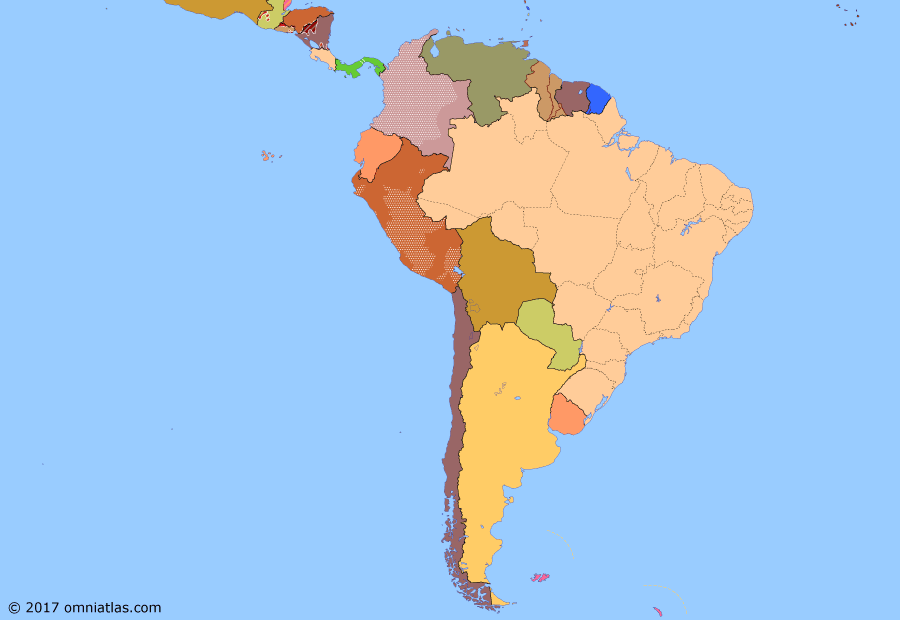South America 1990: US invasion of Panama

US invasion of Panama
3 Oct 1939 Declaration of Panama
13 Sep 1941 Ecuadorian-Peruvian War
22 Aug 1942 Brazil enters World War II
20 Apr 1945 South America in World War II
12 Mar 1948 Rio Pact
28 Oct 1962 Cold War reaches Latin America
30 Jul 1970 Exporting the Revolution
1 Mar 1979 Operation Condor
3 Apr 1982 Falklands War
3 Jan 1990 US invasion of Panama
11 Jan 2012 Pink Tide
15 Jan 2024 South America Today
As the Cold War came to a close in 1989, Soviet and Cuban support for Communist guerrilla movements in Latin America dried up. This left drug cultivation and trafficking - already a destabilizing force in the region - as the main source of income for insurgents. By now, several governments had been compromised by drug money; most notably Panama, whose dictator, Manuel Noriega, was frequently referred to as a drug lord. Although they had originally backed him, the US eventually tired of Noriega's exploits and, in late 1989, invaded Panama and overthrew him.